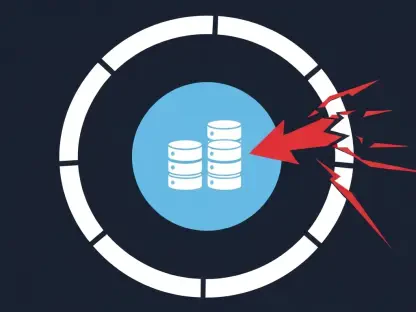In a chilling reminder of the vulnerabilities lurking within even the most widely used applications, a sophisticated zero-click spyware attack has recently targeted Apple users through WhatsApp, raising alarm bells across the cybersecurity landscape. This breach, exploiting critical flaws in the iOS and Mac versions of the messaging platform, allowed attackers to infiltrate devices without any user interaction, posing a severe threat to privacy and security. Discovered in recent months, the attack honed in on a select group of high-profile individuals, amplifying concerns about the potential misuse of such exploits. The incident underscores the ever-evolving nature of cyber threats and the pressing need for robust defenses against attacks that require no action from victims to succeed. As details emerge, the focus shifts to understanding the mechanics of this breach, the response from involved parties, and the broader implications for users worldwide.
Unpacking the Zero-Click Vulnerability
The core of this alarming incident lies in a high-severity bug tracked as CVE-2025-55177, which exposed a flaw in WhatsApp’s handling of linked device synchronization messages. This vulnerability, when paired with another issue patched earlier this year, enabled attackers to process content from arbitrary URLs directly on a victim’s device. What makes this exploit particularly dangerous is its zero-click nature, meaning no user interaction—such as clicking a link or downloading a file—was necessary for the attack to take hold. Reports indicate that this campaign, active for several months, was highly targeted, affecting fewer than 200 users. The precision of the operation suggests a deliberate focus on specific individuals, likely those in influential positions. Such attacks are not only a breach of personal security but also a stark reminder of how advanced cyber tools can be weaponized to access sensitive data like private messages or personal files without any warning.
Delving deeper into the technical ramifications, the exploit’s ability to bypass traditional user defenses highlights a critical gap in application security. Zero-click attacks are notoriously difficult to detect because they leave little trace of interaction that might alert a user to suspicious activity. In this case, the flaw allowed remote code execution, potentially granting attackers full control over compromised devices. Cybersecurity experts have noted that such vulnerabilities often require significant resources to develop, pointing to the likelihood of sophisticated actors behind the campaign. The limited scope of the attack does not diminish its severity; instead, it emphasizes the calculated intent to target high-value individuals, possibly for espionage or data theft. This incident serves as a wake-up call for developers to prioritize rigorous testing and for users to remain vigilant about the software they rely on daily.
Targeted Nature and Potential Actors
The selective nature of this WhatsApp attack raises questions about the identity and motives of the perpetrators. With fewer than 200 users affected, the campaign appears to have been meticulously curated to impact specific targets, often high-profile figures such as politicians, journalists, or government officials. Notifications sent by Meta, WhatsApp’s parent company, to the affected users indicate an awareness of the breach’s limited but significant reach. While the exact identities of the attackers remain undisclosed, the complexity of zero-click exploits frequently points to state-sponsored entities or well-funded groups with access to advanced cyber capabilities. These actors often deploy such tools for espionage, seeking to extract sensitive information or monitor communications of individuals deemed critical to their interests. The lack of attribution complicates efforts to hold perpetrators accountable and underscores the shadowy nature of modern cyber warfare.
Beyond the immediate victims, the incident reflects a broader trend of zero-click attacks being leveraged against Apple ecosystems, echoing earlier vulnerabilities like those found in the AirPlay Protocol. The recurring theme is the exploitation of trusted platforms to gain unauthorized access, often with devastating consequences for user privacy. Cybersecurity analysts argue that these attacks exploit the inherent trust users place in popular applications, turning convenience into a liability. For high-risk individuals, the stakes are even higher, as compromised devices can expose critical data or communications to malicious actors. This case illustrates the urgent need for enhanced security protocols tailored to protect those most likely to be targeted, alongside greater transparency from tech companies about the nature and scale of such threats. The evolving landscape demands proactive measures to mitigate risks before they escalate further.
Responses and Mitigation Efforts
In the wake of this breach, WhatsApp acted swiftly to address the vulnerability by releasing a patch to close the security gap. Meta’s response also included direct notifications to the small group of affected users, a move that reflects an effort to maintain transparency despite the limited scope of the attack. However, the rapid deployment of a fix does little to erase the concern over how such a flaw went undetected for months. The urgency for users to update their applications cannot be overstated, as outdated software remains a prime target for attackers seeking to exploit known vulnerabilities. This incident also highlights the importance of collaboration between tech companies and security researchers to identify and neutralize threats before they can be weaponized on a larger scale. The patch serves as a critical first step, but it also raises questions about the long-term strategies needed to prevent similar exploits from emerging in the future.
Looking at the bigger picture, the response to this attack must extend beyond immediate fixes to encompass broader cybersecurity education and awareness. Users, particularly those in sensitive roles, need access to resources that help them recognize potential risks and adopt best practices for securing their devices. Meanwhile, tech giants like Meta face mounting pressure to invest in more robust security frameworks that can withstand the sophistication of modern cyber threats. The incident also serves as a reminder of the cat-and-mouse game between defenders and attackers, where each new patch prompts adversaries to seek out the next vulnerability. Strengthening defenses will require not only technical innovation but also a cultural shift toward prioritizing security at every level of software development. Only through sustained effort can the industry hope to stay ahead of threats that grow more insidious with each passing day.
Lessons Learned and Future Safeguards
Reflecting on the aftermath of this targeted spyware campaign, the incident revealed critical weaknesses in WhatsApp’s security architecture that allowed attackers to exploit Apple devices with alarming ease. The breach, though limited in scope, demonstrated the devastating potential of zero-click exploits to undermine user trust and privacy. Meta’s prompt action to patch the flaw and notify affected individuals was a necessary response, but it also exposed the reactive nature of current cybersecurity measures. The sophistication of the attack, likely orchestrated by well-resourced actors, served as a stark warning of the persistent dangers facing high-profile users in an increasingly connected world.
Moving forward, the focus must shift to proactive solutions that anticipate and neutralize threats before they materialize. Tech companies should prioritize regular security audits and invest in cutting-edge detection tools to identify vulnerabilities early. For users, staying informed about updates and adopting multi-layered security practices are essential steps to mitigate risks. Collaboration across the industry will be key to developing defenses that evolve alongside emerging threats. This incident ultimately reinforced the need for constant vigilance and innovation to protect against the unseen dangers of the digital age.









